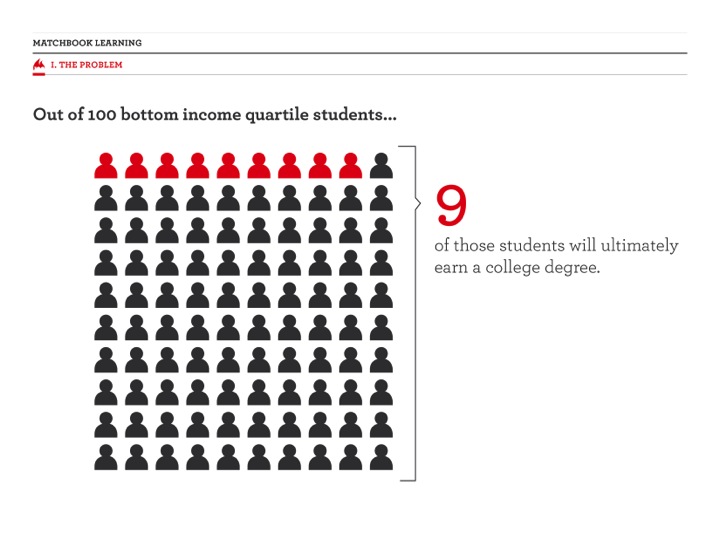
9%. This is the probability that a child born in a bottom income quartile zip code in the US has of achieving a college degree by age 25.
9%
Why?
According to Eric Hanushek, a Stanford University economist, students of very bad teachers will learn, on average, half a year’s worth of material in one year. Meanwhile, students in the class of a very good teacher will learn a year and a half’s worth of material in that same year. That difference amounts to a year’s worth of learning in a single year.
In a December 2011 research paper by Raj Chetty and John N. Friedman of Harvard and Jonah E. Rockoff of Columbia studied the long term compounding impact of better teachers on students’ life outcomes and found that by replacing a bottom 5% teacher with one of average quality would lead students to more likely attend college, live in better neighborhoods, save for retirement, less likely to have children as teenagers and earn higher salaries to the cumulative compounding tune of $1.4M more for the average classroom.
$1.4M.
What about the effects of poverty? Single parent homes? Drugs? Parent Involvement? Discipline? Low expectations? The critics claim that these all work in concert to overwhelm the odds of children in poverty, in turn driving a 9% probability. Yes, those are forces. And yes, involved parents, strong communities and a culture of high expectations, no excuses and valuing education are incredible levers for academic and life excellence that children in the top income half of the country more often than not have. But for those children who may not have access to those positive forces, we cannot sit idly by and watch the negative forces play out. 9%.
The research shows, teacher trumps environment. Teacher effects dwarf school effects. Your child is better off in a “bad” school with an excellent teacher than in an excellent school with a bad teacher. Teachers must be at the heart of turning around student performance if we are to reach the scale of entire schools.
So how do we create good teachers to turnaround bad schools?
We’ll look at this question more closely and intensively in the coming months. It will take more than just a single blog entry to cover this question well and it is one that the industry of education has wrestled with since the inception of schools and one that no one, including us, has fully and completely answered yet. However, Matchbook Learning believes technology can play an important (but not sole) role in building and scaling great teachers in historically poor schools and have designed our blended model to do just that.


